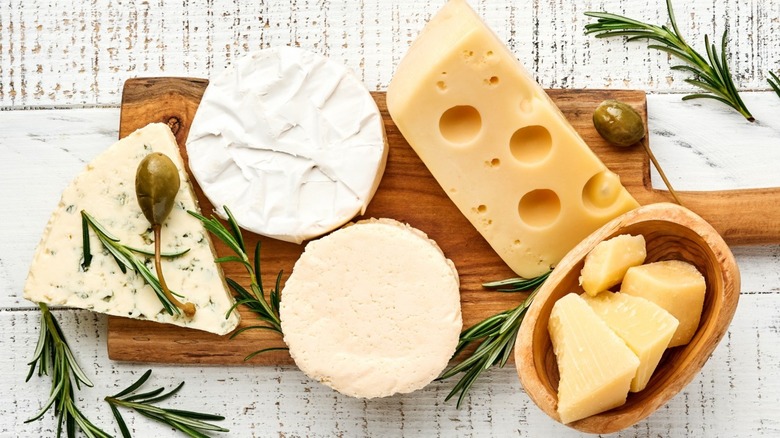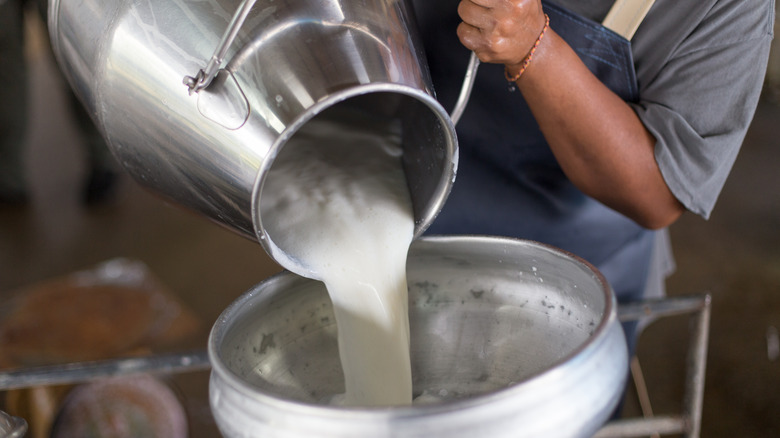The Surprising Amount Of Milk It Takes To Make Cheese
The tradition of cheesemaking goes back centuries, with a handful of ideas as to where exactly the practice originated. The National Historic Cheesemaking Center credits ancient Greeks and Egyptians with the first, if not accidental, discovery of the cheesemaking process. The International Dairy Foods Association, on the other hand, attributes a wide variety of cultures — from those of the Romans, Arabs, and travelers from Asia to Europe — to the art of making cheese. While it is unknown for certain just who invented the first block of cheese, what can't be debated is that cheese has become a beloved staple of many cuisines.
But whether you're chewing down on squeaky cheese curds, making a grilled cheese sandwich, or preparing an elaborate charcuterie board of gorgonzola and smoked gouda, has it ever crossed your mind how all these kinds of cheeses come to be? For example, you may know that milk is a vital part of cheesemaking, but just how much of it is needed for the process? According to some sources, you're going to need a lot of milk if you want even a single pound of gouda.
It takes 10 pounds of milk to make 1 pound of cheese
Molly Browne, a Dairy Farmers of Wisconsin education manager and American Cheese Society-certified cheese professional and cheese sensory evaluator, revealed to Mashed that 10 pounds of whole milk are required to make just 1 pound of cheese. To get your math skills jogging, this would mean that in order to make 10 pounds of cheese, you would need 100 pounds of milk.
But before you go thinking that this is an enormous waste of milk for such a small output, Browne explained further that the leftover liquid from the cheesemaking process, known as whey, is often reused in a variety of ways. These can include everything from being given as a dietary supplement to farm animals to being incorporated into whey-based protein powder. In some cases, a system called a biodigester can be used to break down large amounts of whey into biogas, a renewable fuel that can be used for heating, vehicles, and more. And, of course, whey is also used to make beloved products like ricotta and mysost, a type of dark brown-colored cheese found in Scandinavian countries, per Cultures for Health.

